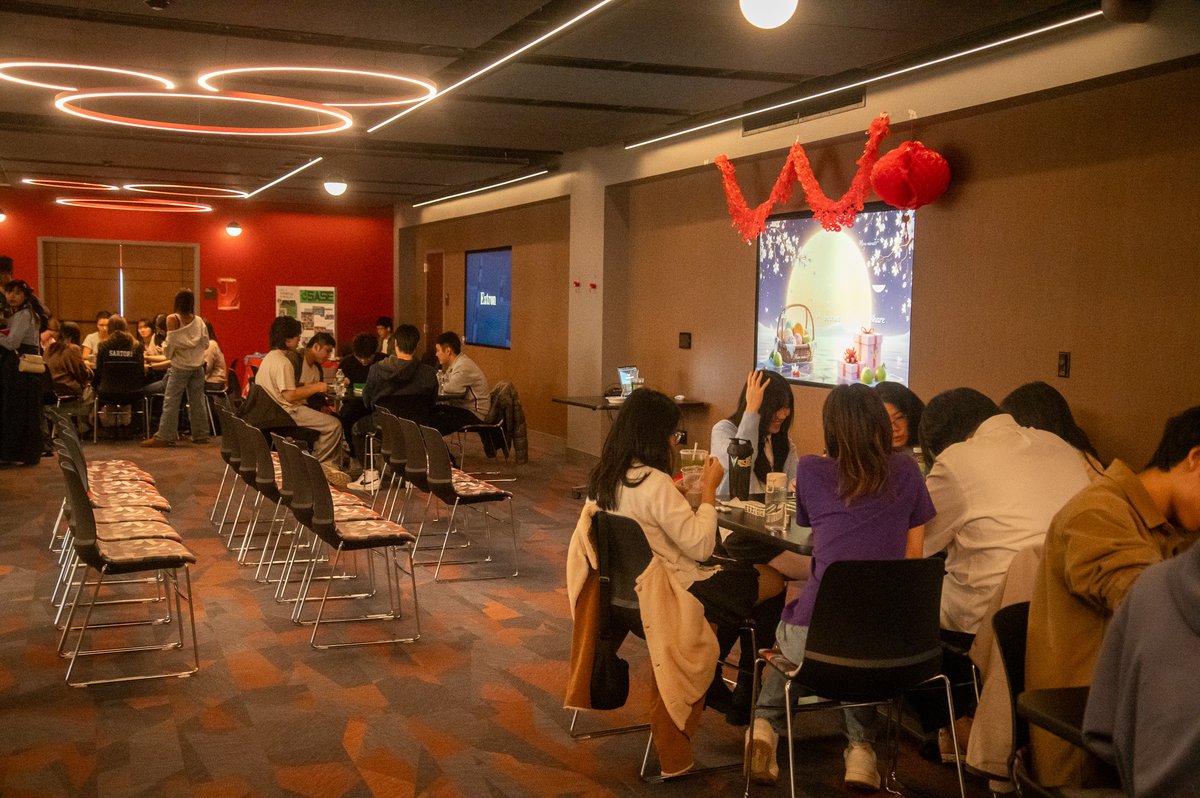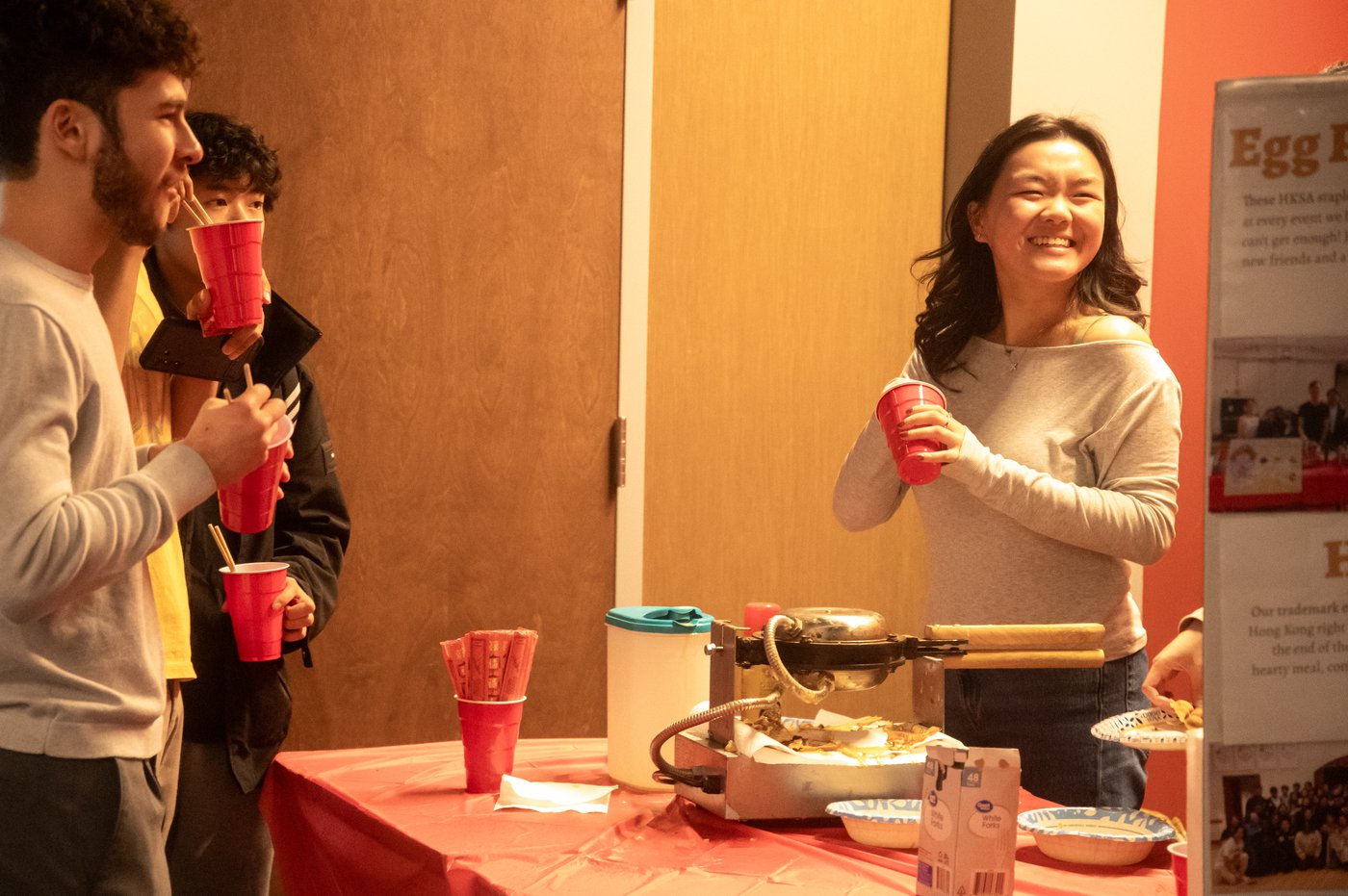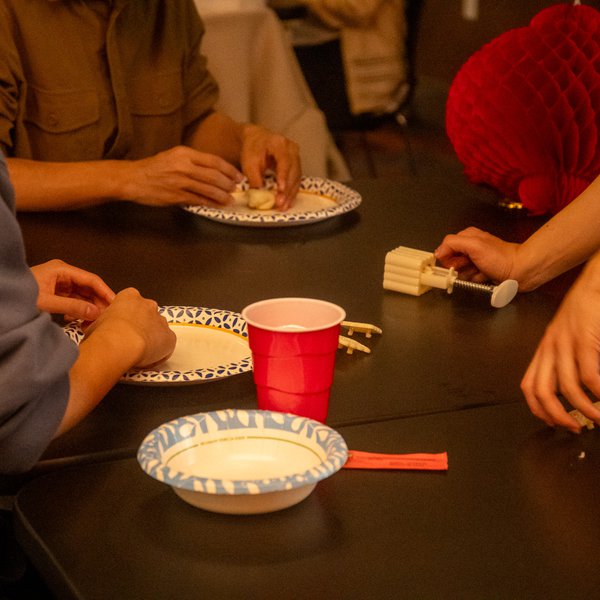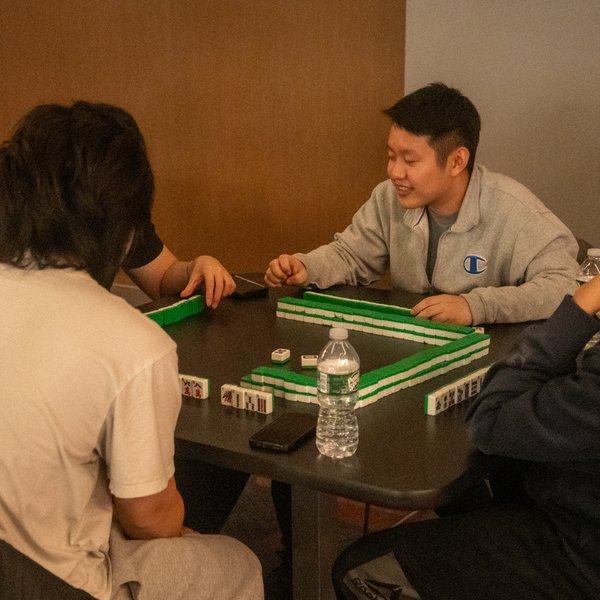Mid-Autumn Festivities with CASA, SASE, and HKSA

The Chinese American Students Association, Society of Asian Scientists and Engineers, and Hong Kong Student Association took over the Union Ballroom to celebrate the Mid-Autumn Festival with their fellow students at RPI. The Mid-Autumn Festival, also known as the Moon Festival, originated during the Zhou dynasty and served as an opportunity to honor and worship the harvest moon. It gained popularity in the Tang dynasty, where the wealthy upper class held large parties where they enjoyed drinking and leisurely appreciating the beauty of the moon while commoners prayed to the moon for a good harvest.
As you walked into the ballroom, you could see tables of students playing mahjong together. Mahjong is a tile-based game that originated in 19th-century China. It is typically played with four people and requires great strategizing in order to be the first to complete a winning hand via drawing and discarding tiles.
If talking and strategizing round after round became too tiring, you could purchase a refreshing snack of grass jelly and sago in milk, provided by CASA, all for just two dollars. Aside from this treat, everything else at the event was free. CASA also ran a table where you could make your own moon cakes—and eat them too, of course! Traditional mooncakes are round, baked pastries with a thick paste filling. As it would not have been easy to bake these treats in the Union, the make-your-own version consisted of a thin, glutinous rice-based covering with red bean paste filling. The most crucial detail of mooncakes involves compressing the filled dough ball using a mold that stamps a complex and beautiful design onto the top. Mooncakes are an essential part of the festival, as they are important treats to the goddess of the moon Chang’e.
Another treat was plain bubble waffles given out by HKSA in exchange for a follow on Instagram. They are also known as egg puffs and originated in Hong Kong. Using a special pan with egg-shaped divots, HKSA made thin, light, and crispy waffles for everyone. If you enjoy a lightly sweet flavor, you can enjoy it as is, but if you want some more sweetness, you can top it with ice cream, fruit, syrups, or anything else you could dream of.
By SASE and CASA's poster tables, students were able to make red string adjustable bracelets and jade bead phone charms. In Chinese culture, red symbolizes happiness, celebration, and good fortune. It is a key color that is often seen at important festivals in China. Wearing a bracelet with thread of this color is believed to help attract luck and ward off evil. Jade, too, is believed to have protective qualities as well as representing nobility, purity, and longevity.
The event had a cozy and homely atmosphere that made it feel like you were truly celebrating with one big family.



